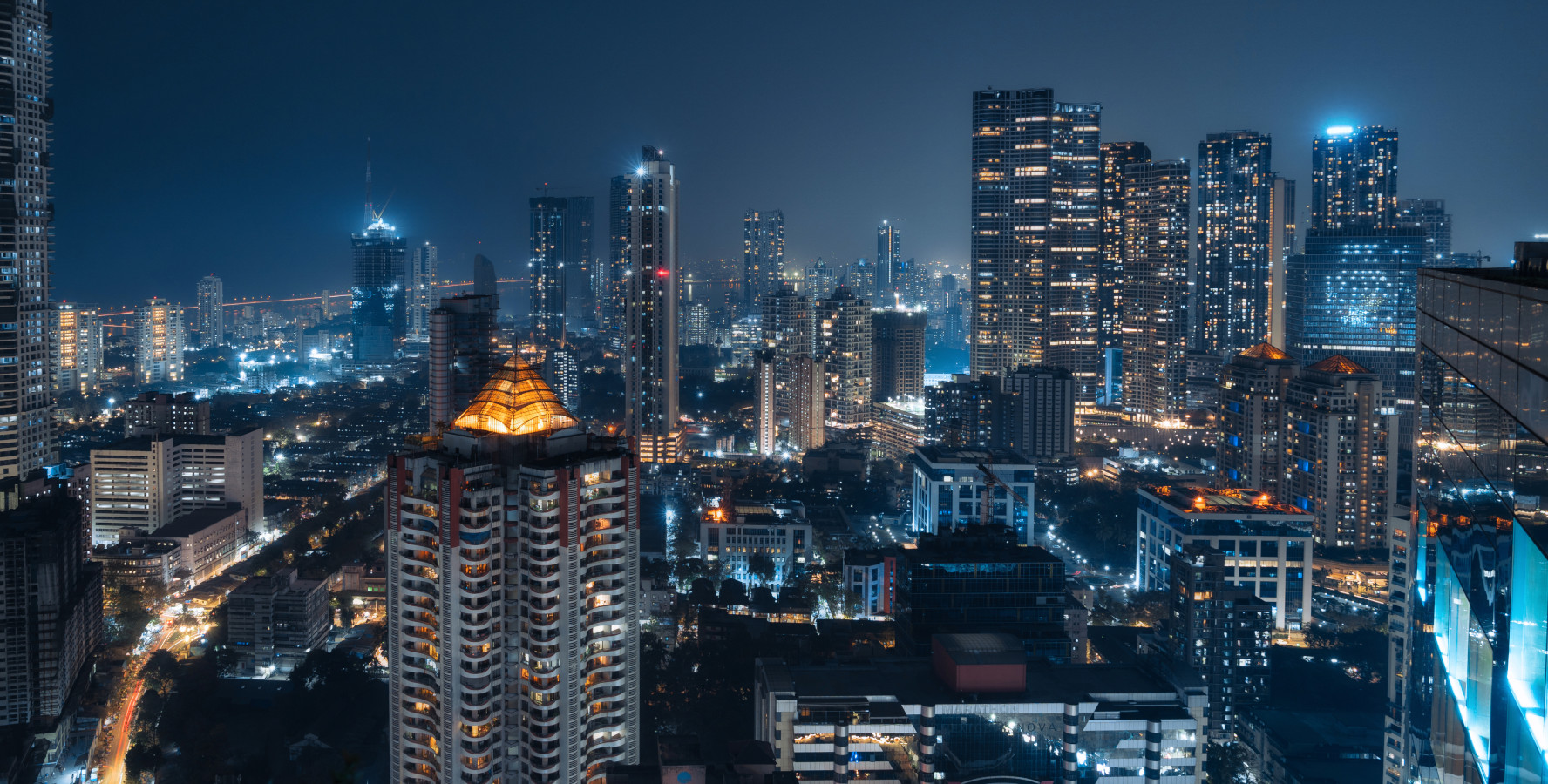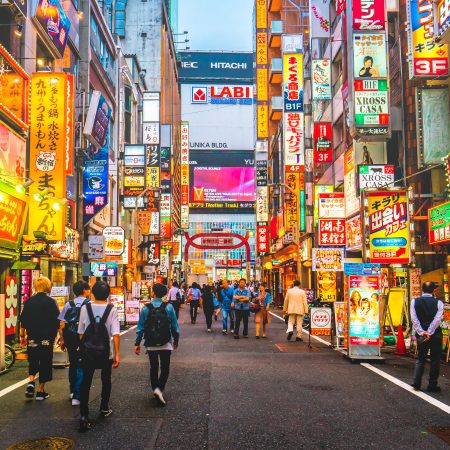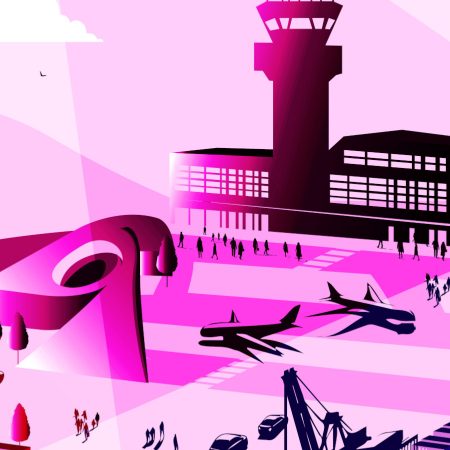Bold visions and a focus on technology are what count when it comes to driving economic performance. Nowhere is this more apparent than in Asia, where a plethora of cities offer a potent mix of rising wealth, expanding economies and the potential for new development and business expansion. The continent is home to 14 of the top 15 Savills Growth Hubs.
The Growth Hubs Index is a companion to the Savills Resilient Cities Index. It focuses on the economic-strength pillar of the Resilient Cities Index to identify the cities that will outpace their competitors as we approach 2033. Cities in India and Bangladesh, which are expected to see GDP growth of more than 68% over the decade, feature heavily. Bengaluru in India leads the Growth Cities pack, followed by Ho Chi Minh City in Vietnam.
Savills Resilient Cities: Growth Hubs, top 15
Fastest-growing major cities by 2033, based on their economy, population and wealth
Source: Savills Research
How does the index work?
The Growth Hubs Index builds on the Resilient Cities Index by forecasting the economic aspects of 230 cities through to 2033 to identify the fastest-growing cities.
These factors are:
- Economy: future strength – city GDP in 2033 and future credit rating
- Economy: growth – percentage increase in city GDP growth, 2023–2033
- Personal wealth: growth – percentage increase in city GDP per capita and percentage increase in number of households earning more than $70,000, 2023–2033
- Population and migration growth – percentage increase in city population and migration, 2023–2033
- Population: future dependency ratio – ratio of dependants to working-age population in 2033
Data is city-metro level from Oxford Economics. Future credit rating is at a country level. Only cities with a GDP in 2023 of $50 billion or above are included in the analysis.
The rise of Asia
The transformation of Asia’s economic base, with its increased emphasis on tech-driven growth, underpins the dominance of the region’s cities in the rankings. However, planned infrastructure investment and strategies to improve connectivity and business competitiveness are key factors as well.
A large proportion of Asian cities are also set to record an expanding middle class, as personal wealth rises significantly across the region. That said, the region’s traditional manufacturing competitiveness remains a key foundation for growth.
“You wouldn’t want to overlook traditional manufacturing drivers,” says Simon Smith, Senior Director, Research & Consultancy at Savills, based in Hong Kong. “They’re still significant, particularly where traditionally low-cost land and labour markets are becoming more expensive, forcing industries to consider relocating to other areas. And it’s not just costs driving relocation – it’s also the need for resilience as a business for being diverse in the region.”
The intra-regional manufacturing shift from China to Southeast Asia is one of many intriguing subplots being played out. “North Asia is ageing at a staggering rate, in the case of countries like South Korea. But Southeast Asia and India are still young. They’re still youthful and they’re still urbanising,” adds Smith.
Innovation and the rise of the new city
As global growth pivots further from west to east, the real estate implications for cities multiply. The new centres of innovation will become magnets for growing and scaling businesses and this will underpin demand for offices, manufacturing and logistics space, and homes. Meanwhile, rising personal wealth and disposable incomes will drive opportunities for new retail and leisure developments.
Rapid growth is not easy to manage. “If you manage urbanisation successfully, you get better health outcomes, better employment prospects, better education – you even get better environmental outcomes,” says Smith. “If you mismanage it, you get poverty, crime, slums and health problems.”
Tomorrow’s growth hubs can learn from the challenges of today’s by developing sustainably. Public transport networks need to be invested in and expanded, and the real estate mix needs to ensure long-term prosperity that benefits all residents. Some countries are developing ground-up cities, such as Saudi Arabia’s Neom and Egypt’s New Administrative Capital, to achieve this. For existing cities, growth can be hampered by bureaucracy – China’s hukou system, for example, limits migration into its biggest cities.
Viewing cities through the prism of economic performance and population growth gives a good indication of those likely to be flourishing in a decade’s time. But today’s global growth hubs won’t automatically turn into tomorrow’s Resilient Cities. For this, they’ll need to consider their own pathways to more environmentally sustainable development, and improve education and labour force participation. They’ll also need to facilitate stable, transparent and liquid real estate markets.
City GDP in 2033
Source: Savills Research
Vietnam: increasing incomes and infrastructure investment
Vietnam has two cities in the top 15. Ho Chi Minh City’s strong forecast is driven by the largest increase in the number of high-income households, while Hanoi’s prospects are based on growing personal wealth and an expanding middle class.
The country continues to lay the groundwork to reap the benefits of strong inflows of foreign direct investment in the coming decade through step-changes in infrastructure, regulation and planning.
About 6% of GDP is committed to infrastructure – the highest level in the region. This is for projects including Long Thanh International Airport, east of Ho Chi Minh City, as well as thousands of kilometres of new roads and deep sea ports.
The government also has a $134.7 billion plan to reduce reliance on coal and has passed new laws at pace to advance the country’s competitiveness, governance and social justice.
The result is a growing tech manufacturing base supported by inward investment from South Korea, Singapore and China, as well as European companies securing their supply chains out of Asia. “Vietnam has changed from traditional dirt-floor manufacturing, with companies just seeking a lower cost of labour, to a country that is high-tech, more intensive, with tertiary manufacturing,” says Troy Griffiths, Deputy Managing Director, Central Management at Savills Vietnam. “These are activities which have a really long tail and spread to the broader economy.”
This means the production of solar panels, electric vehicles, chips, laptop batteries, phones, monitors and all the relevant downstream components. Vietnam relies on a couple of key relationships, however: Samsung represents a remarkable 10-30% of the country’s GDP, while LG Corp also has a strong presence.
In April last year, Prime Minister Pham Minh Chinh addressed representatives of the country’s 63 provinces and cities to launch a National Master Plan, which emphasises high-tech growth and improved planning. Its implementation will introduce land-use zones and generate much-needed transport development.
Ho Chi Minh City has always been the gateway for foreign investment. At 92% occupancy, it has a strong office market with a shortage of Grade A stock. Retail is thriving too, with robust domestic demand driving modernisation of the city’s traditional shophouses.
Hanoi has also won a large share of high tech manufacturing opportunities recently, but its downfall is its air quality. Situated in a delta bordered by two mountain ranges, any pollution becomes trapped; the city recently topped a list of the most polluted cities in the world. However, improving infrastructure has facilitated the development of localities with clean and natural environments within an hour’s travel, offsetting the city’s pollution issues.
Overall, investment in infrastructure is expected to shift the country’s industrial landscape. Around these new projects, land will also be earmarked for residential developments, plus supporting services and amenities.
China: established infrastructure and tech innovation ambitions
Despite a slowing Chinese economy, five cities (Shenzhen, Guangzhou, Suzhou, Wuhan and Dongguan) rank in the top 15 global growth hubs.
China’s approach to growth is large scale: Shenzhen, Guangzhou and Dongguan are all part of the Greater Bay Area, a mega-region that is home to 86 million people or 5% of China’s population. Here, the government has set out the infrastructure, made commuting easy and encouraged companies to build relationships between those locations.
“China is shifting towards new economy sectors, with technology at the forefront. This includes areas like solar panels, semiconductors and electric vehicles – essentially anything related to hard technology. Fostering ‘new quality productive forces’ and prioritising innovation are now key national goals, and some cities are particularly well-positioned to capitalise on this shift,” says Nicky Zhu, Head of Strategic Advisory Services at Savills China.
Dongguan, a smaller city with a population of 7.9 million and an old, low-end manufacturing hub, has ambitions to become an innovation hub, due to its close proximity to Shenzhen and Guangzhou.
Meanwhile, Wuhan is keen to shake off its reputation as the epicentre for the Covid-19 virus. Its pivotal location in China’s central region makes it an obvious place for domestic or international companies looking to gain
a foothold in east and west China.
China’s economic growth is slowing, but this also reflects its future plans. “It’s not just slow growth, but a different type of growth,” says Zhu. “The last couple of decades have been dominated by real estate, finance and consumption. Those aspects are now slowing and it is becoming more of a planned economy.”
India: strong services sector matched by resurgence in engineering and manufacturing
With the pace of urbanisation picking up in India, it’s no surprise to find five of its cities in the top 15 global growth hubs. This includes Delhi which, through a surge in migration, is expected to become the world’s most populous city by 2050.
The continuation of a strong services sector, supported by a young and highly educated workforce, will drive progress in banking and finance – and, increasingly, technology. These industries will benefit the major centres, such as Bengaluru and Mumbai, as well as Hyderabad – a tech hub forecast to see the highest rate of GDP growth per capita over the next 10 years out of the 230 cities analysed.
In the meantime, the service industries are being matched by a resurgent secondary sector linked to engineering and manufacturing, buoyed by government policy support and a leaner tax structure. “These two economic forces are going to continue to grow,” says Anurag Mathur, CEO at Savills India. “Add to this India’s huge demographic dividend, and much of the growth is going to be flocking to these top five cities.”
With only 35% of India living in urban environments, high levels of migration are expected from its tier-two and tier-three cities, as well as from smaller towns and rural locations. While this works in favour of the larger cities, it brings challenges such as overcrowding – something the government hopes to allay through major infrastructure investment.
Indian cities’ growth boost is having a wholesale impact on real estate. Office space and warehousing broke take-up records across the top-tier Indian cities in 2023. A huge swathe of tech-related space is also on the cards, with estimates of 96m sq ft of new life sciences real estate by 2030.
Other traditional sectors are growing in tandem. Residential picked up in 2019, before a Covid-induced lull, and hospitality is fuelled by strong domestic demand. According to the International Air Transport Association, domestic air passenger traffic exceeded pre-pandemic levels in March 2023, making up for shortfalls in international passenger flows.
RAMESH NAIR
CEO, MINDSPACE BUSINESS PARKS REIT
“In the current landscape of global innovation, Indian cities are emerging as key hubs in which the futures of technology and business converge. Cities like Bengaluru, Hyderabad, Mumbai, Chennai, Delhi and Pune, with their rich pools of talent, are creating ecosystems where innovation thrives.
The synergy between top-ranking universities and growing tech sectors in these cities creates significant opportunities, fostering environments where the brightest minds are nurtured. This is crucial for businesses aiming to lead in the competitive global market.
The cost advantages of hiring in India present a compelling case for investment – especially as economic efficiencies don’t come at the expense of talent quality.
Moreover, the integration of these tech hubs with their local communities and their commitment to sustainable growth are key to their resilience. They show how future cities might balance economic aspirations with environmental and social responsibilities.
Essentially, the future of global business and innovation is undeniably intertwined with the growth of Indian cities. Their role in the global order is not just as competitors, but as leaders in shaping the knowledge economy.”
QUAISER PARVEZ
CEO, NUCLEUS OFFICE PARKS
India’s economic growth is fuelled by the potential of its cities. Bengaluru, Mumbai and Delhi have shed their industrial past to emerge as the new bases of the digital era, boasting young, educated and dynamic workforces.
Mumbai’s resilient spirit anchors India’s financial and real estate ventures, whereas Bengaluru, much like Silicon Valley, thrives on technological innovation. It has created an ecosystem that attracts talent and investment alike.
The narrative of Indian cities goes beyond simple, rapid growth. It’s an urban revolution that has generated flourishing talent pools and higher-value industry as well. However, the true test of this growth will be how the infrastructural, housing, public service and sustainability challenges are tackled.
Saudi Arabia: mega infrastructure projects supporting a surge in population
Riyadh is the only city in the top 15 global growth hubs not located in Asia. Its potential is linked to a forecast 26% population growth, taking the city from 5.9 million to 9.2 million in 10 years.
This population increase is integral to Saudi’s economic goals and is expected to result in continued government spending on mega infrastructure projects, as well as improved amenities and services to accommodate the growing population.
By working population, the country already has a strong footing. “Saudi Arabia boasts a population of around 36 million people and, astonishingly, 67% are under the age of 35,” says Richard Paul, Head of Professional Services & Consultancy Middle East, Strategic Consultancy in Dubai. “The employment potential and ultimate spending power of this segment of the population over the next decade is enormous.”
Requirements for regional headquarters continue to drive the office market, while a growth in tourism is increasing demand for retail near popular tourist destinations. Foreign ownership of assets currently comes with conditions, but a recently proposed law to lift those restrictions could see new inflows of capital into the city.



